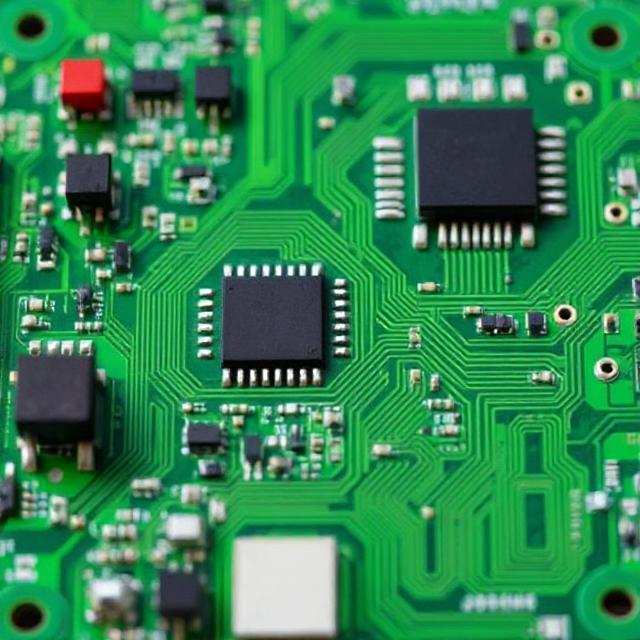What is Cryptographic Hardware Security?
Cryptographic hardware security refers to using special physical devices (like chips or modules) to protect data through encryption. Encryption is a way of converting data into a secret code, making it unreadable to anyone who doesn’t have the key to unlock it. These physical devices are designed to perform encryption and decryption very securely and efficiently.
The goal is to keep sensitive information—like passwords, credit card details, or personal data—safe from hackers and unauthorized access. These devices provide a stronger, more reliable level of security than software-based encryption alone because they are physically isolated and designed to be tamper-resistant.

Key Concepts in Cryptographic Hardware Security:
- Encryption and Decryption:
- Encryption is the process of turning readable data into an unreadable format using a cryptographic algorithm and a key.
- Decryption is the reverse process—turning the unreadable data back into its original, readable form using the key.
These operations are essential for securing data, especially when sending sensitive information over the internet.
- Cryptographic Keys: A cryptographic key is a piece of information used by an algorithm to encrypt or decrypt data. The key must remain secret, as anyone who has the key can unlock the encrypted data.
- Private keys are kept secret, and only the owner has access to it.
- Public keys are shared with others so they can encrypt messages, but only the person with the private key can decrypt it.
- Hardware Security Modules (HSMs): An HSM is a physical device designed to generate, store, and manage cryptographic keys securely. HSMs are built to prevent unauthorized access to these keys, even if someone gains physical access to the device. They’re widely used in areas like banking, online payments, and government systems.
- Tamper-Resistant: HSMs are specifically designed to protect against physical tampering (like attempts to open the device to steal keys).
- Key Storage: They securely store cryptographic keys so they never leave the device unencrypted, reducing the risk of key theft.
- Trusted Platform Module (TPM): A TPM is a small chip embedded in many modern computers and devices. It provides secure storage for cryptographic keys and can also help with tasks like secure boot (making sure the system starts with trusted software).
- TPMs help ensure that sensitive data like passwords or encryption keys are not easily accessible by hackers or malicious software.
- They can perform operations like encryption without exposing the keys to the rest of the computer, adding an extra layer of security.
- Secure Enclaves: A secure enclave is a special, isolated area within a processor where sensitive operations can happen securely. For example, modern processors like Intel’s SGX (Software Guard Extensions) or ARM’s TrustZone use secure enclaves to store and process sensitive information (like encryption keys) away from the main system, making it harder for attackers to access.
- The idea is that even if the operating system or software is compromised, the data inside the secure enclave remains protected.
How Cryptographic Hardware Security Works:
Let’s break down the process in simple steps:
- Generating Cryptographic Keys:
First, a secure hardware device (like an HSM or TPM) generates cryptographic keys. These keys are stored securely inside the hardware, and no one can access them directly from outside. - Encrypting Data:
When you need to protect sensitive data (like a password or credit card number), the device uses the key to encrypt it. The encryption happens inside the hardware, keeping the key safe from being exposed. - Decryption:
When you need to access the original data, the hardware uses the corresponding key to decrypt it. The device makes sure the key stays secure and doesn’t leak outside the hardware during this process. - Key Management:
The hardware device also helps manage the keys, making sure they are rotated (changed) regularly, backed up securely, and used only in authorized situations.
Why is Cryptographic Hardware Security Important?
- Protection from Hackers:
Hardware devices are designed to be tamper-resistant. Even if an attacker physically steals the device, it’s extremely hard (or nearly impossible) to extract the cryptographic keys and decrypt the data. - Trust:
Cryptographic hardware security ensures that sensitive operations (like transactions, password authentication, etc.) are performed in a trusted, isolated environment, which helps build confidence in systems like online banking, e-commerce, and cloud services. - Performance:
Hardware-based encryption is faster and more efficient than software-based encryption because the hardware is specifically built to handle encryption tasks, reducing the load on the main processor. - Compliance:
Many industries (like finance and healthcare) have strict regulations that require the use of secure, hardware-based encryption to protect customer data. Using hardware security helps meet these legal requirements.
Examples of Cryptographic Hardware Security in Action:
- Banking:
When you make an online payment, cryptographic hardware security (like HSMs) ensures that your payment information is encrypted and secure throughout the transaction process, preventing unauthorized access. - Secure Authentication:
When logging into an online account, hardware-based authentication devices like security tokens or smart cards use cryptographic keys to verify your identity securely, protecting against phishing and hacking attempts. - Government and Military:
Sensitive communications, like military messages or government data, are often protected with cryptographic hardware to ensure that only authorized parties can decrypt and read the information.
Summary:
- Cryptographic hardware security uses special physical devices (like HSMs, TPMs, or secure enclaves) to encrypt and protect sensitive data.
- These devices are built to be tamper-resistant and ensure cryptographic keys are stored securely, making it very hard for attackers to steal or misuse them.
- It is faster, more secure, and more reliable than software-based encryption, and it’s essential in areas where data protection is critical, like banking, government, and healthcare.
In short, cryptographic hardware security is like having a super-secure vault for your most sensitive data and encryption keys, keeping them safe from unauthorized access!
Keywords: Cryptographic, Security, Electronics, Security
Keywords: Cryptographic, Security, Electronics, Security











